Abstract
Of 30 patients with predominantly anaerobic localized infections superimposed on chronic tissue damage related to trauma, ischemia, or tumor, 22 (73%) responded satisfactorily to moxalactam therapy. Moxalactam-resistant anaerobic pathogens emerged in two patients and were responsible for treatment failure. In six patients, two of whom also acquired resistant anaerobic pathogens, isolation of moxalactam-resistant aerobic pathogens increased during therapy.
Full text
PDF

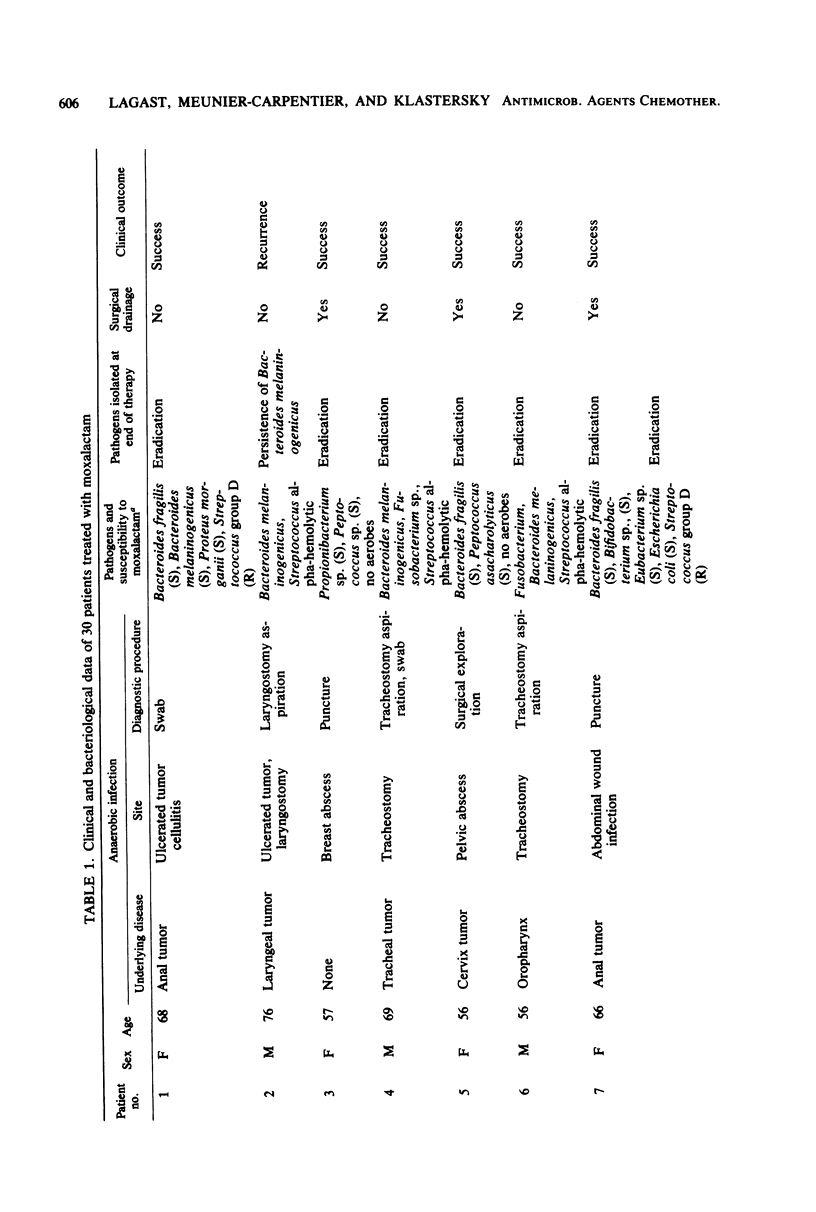
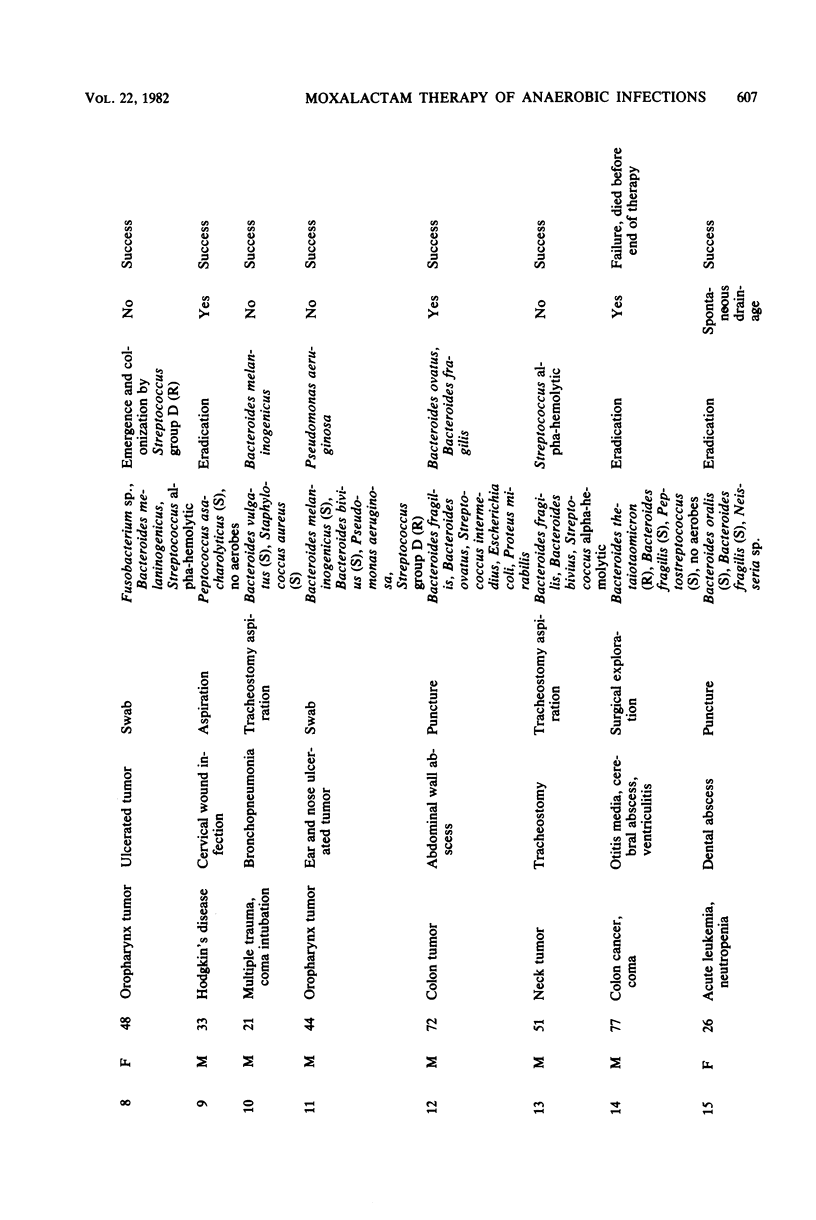
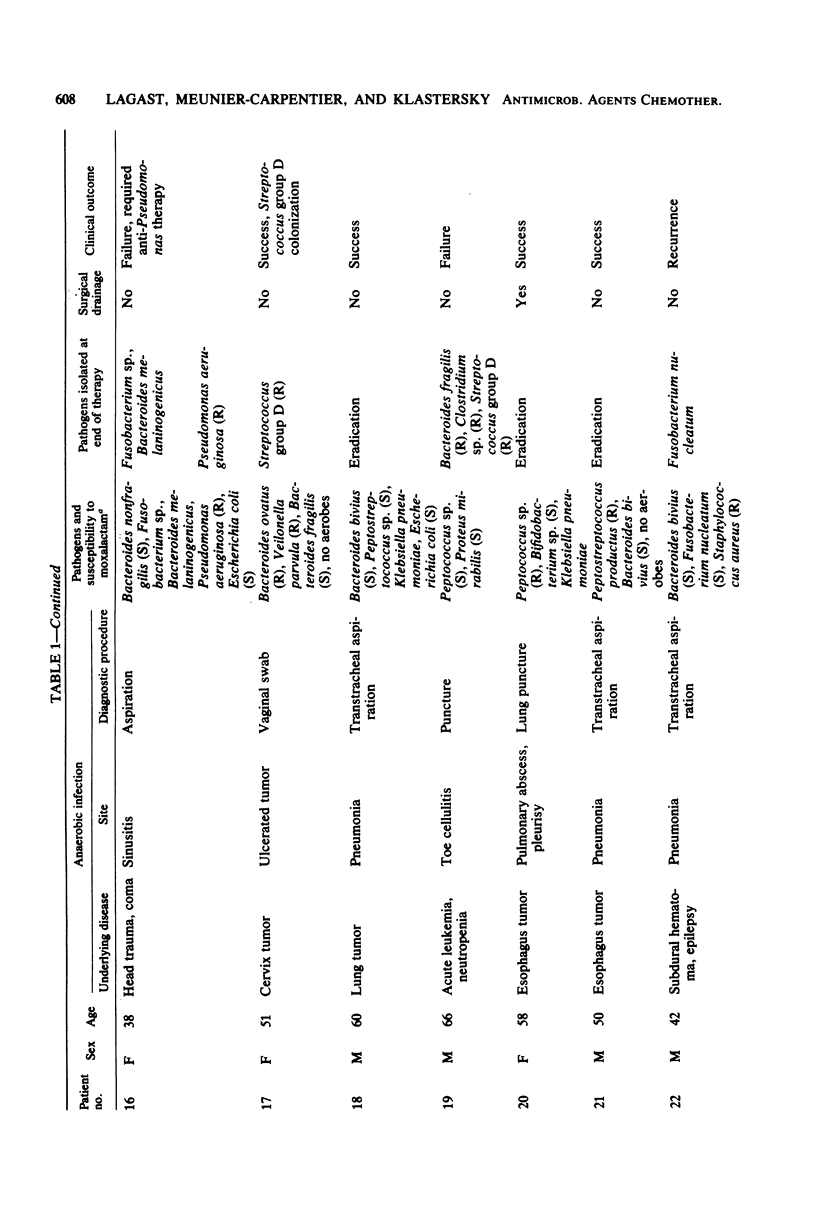
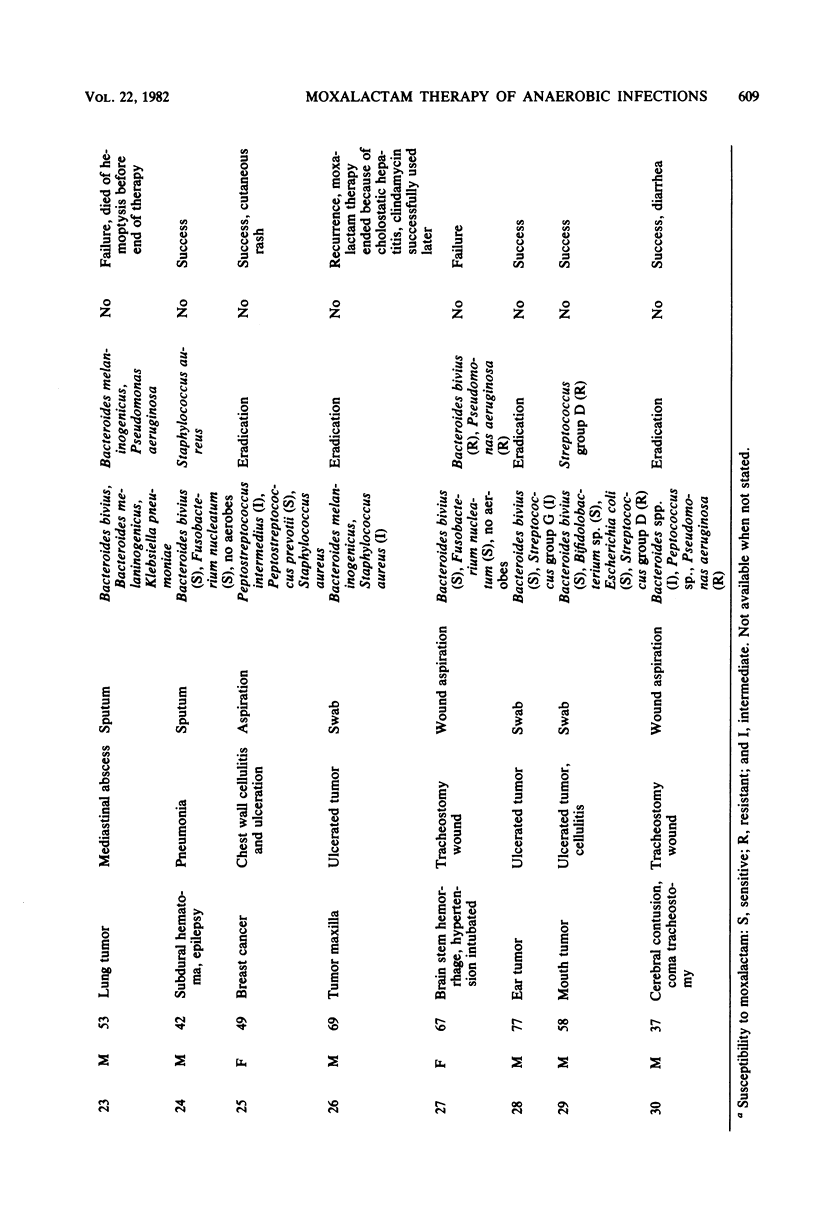
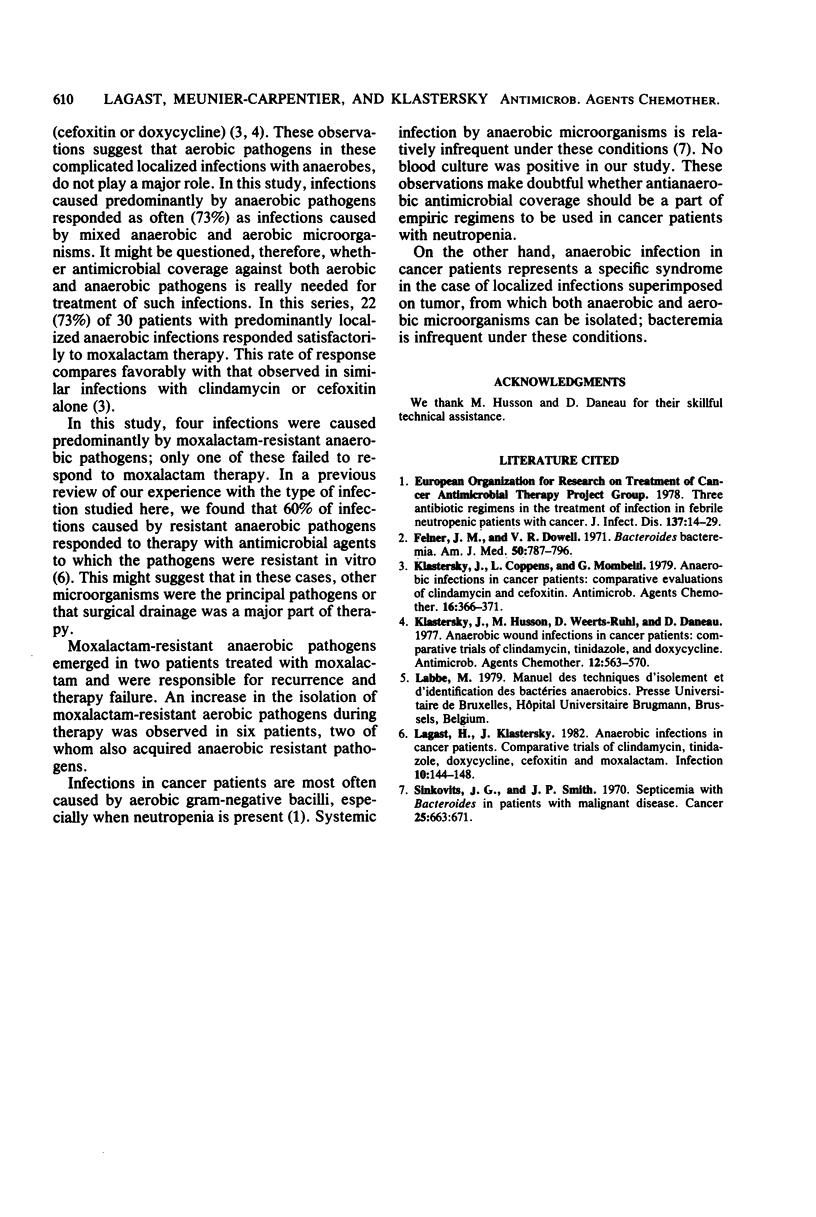
Selected References
These references are in PubMed. This may not be the complete list of references from this article.
- Felner J. M., Dowell V. R., Jr "Bacteroides" bacteremia. Am J Med. 1971 Jun;50(6):787–796. doi: 10.1016/0002-9343(71)90187-2. [DOI] [PubMed] [Google Scholar]
- Klastersky J., Coppens L., Mombelli G. Anaerobic infection in cancer patients: comparative evaluation of clindamycin and cefoxitin. Antimicrob Agents Chemother. 1979 Sep;16(3):366–371. doi: 10.1128/aac.16.3.366. [DOI] [PMC free article] [PubMed] [Google Scholar]
- Klastersky J., Husson M., Weerts-Ruhl D., Daneau D. Anaerobic wound infections in cancer patients: comparative trial of clindamycin, tinidazole, and doxycycline. Antimicrob Agents Chemother. 1977 Nov;12(5):563–570. doi: 10.1128/aac.12.5.563. [DOI] [PMC free article] [PubMed] [Google Scholar]
- Lagast H., Klastersky J. Anaerobic infections in cancer patients--a retrospective analysis of clindamycin, tinidazole, doxycycline, cefoxitin and lamoxactam. Infection. 1982;10(3):144–148. doi: 10.1007/BF01640764. [DOI] [PubMed] [Google Scholar]


